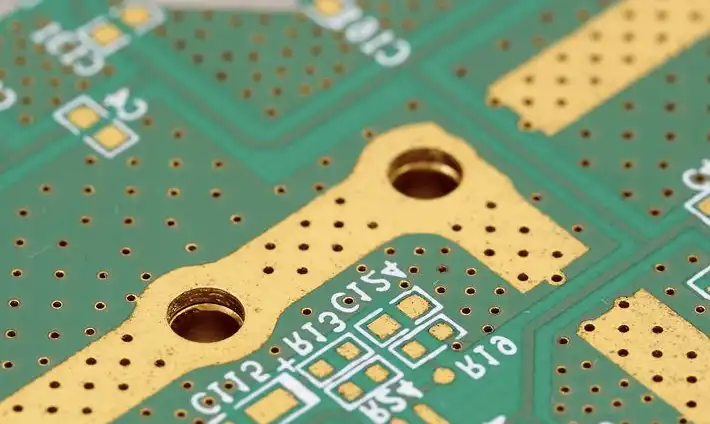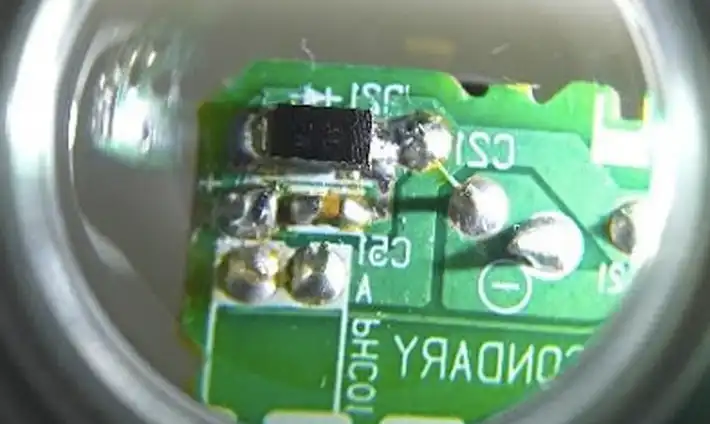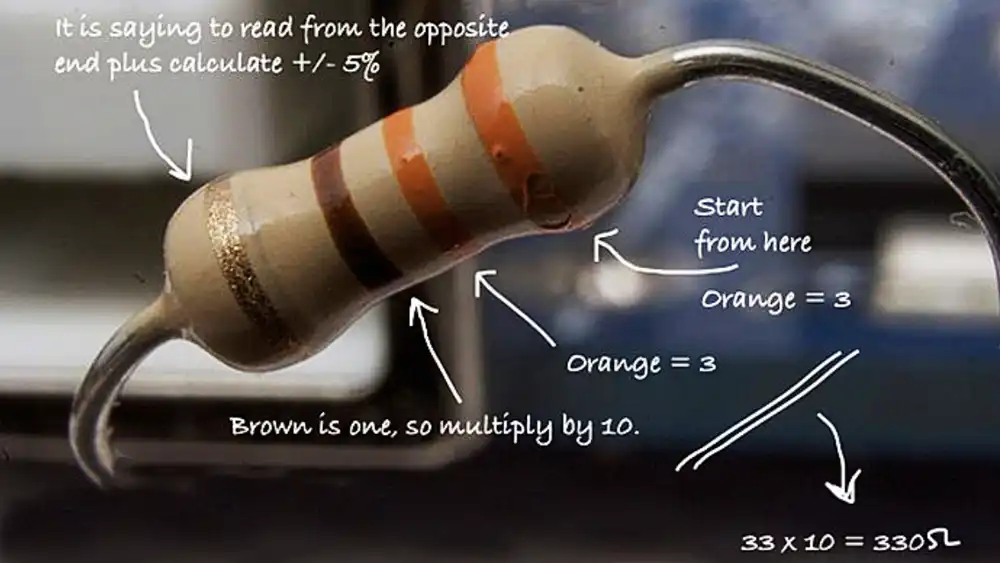In the intricate world of electronics, understanding the codes associated with various components is crucial. These codes serve as a universal language, allowing engineers and hobbyists alike to identify and utilize electronic parts effectively.
From resistors to integrated circuits, each component comes with its own unique coding system.
In this guide, we’ll delve deep into the realm of electronic components codes, unraveling their mysteries and empowering you to navigate the electronic landscape with confidence.
Electronic Components Code List
An electronic components code list is a comprehensive compilation of codes used to identify and classify various electronic components. These codes serve several purposes, including inventory management, procurement, quality control, and regulatory compliance.
Here’s an explanation of the key aspects of an electronic components code list:
- Identification: Each electronic component is assigned a unique code that helps to identify it among a wide range of components. This code typically includes information such as the manufacturer, part number, and sometimes additional details like package type or specifications.
- Classification: Electronic components are classified based on their type, function, and characteristics. The code list organizes components into categories and subcategories to facilitate easy classification and retrieval. Common categories include resistors, capacitors, diodes, transistors, integrated circuits, connectors, and more.
- Standardization: To ensure consistency and interoperability, electronic components code lists often adhere to industry standards or conventions. Standards organizations such as the International Electrotechnical Commission (IEC), Institute of Electrical and Electronics Engineers (IEEE), and Electronic Industries Association (EIA) may define standardized codes or naming conventions for electronic components.
- Cross-Referencing: Electronic components code lists may include cross-references to facilitate interchangeability or compatibility between components from different manufacturers. This helps users identify alternative parts or substitutes for their specific application requirements.
- Regulatory Compliance: Some electronic components code lists incorporate regulatory information or compliance markings to indicate adherence to industry standards, safety regulations, environmental directives (such as RoHS or REACH), or quality certifications (such as ISO or UL).
- Documentation: Manufacturers provide datasheets or technical documentation for electronic components, which often include the respective codes along with detailed specifications, operating parameters, mechanical dimensions, and application notes. These documents serve as essential references for engineers, designers, and procurement professionals.
- Integration with Supply Chain Management: Electronic components code lists are integral to supply chain management processes, including sourcing, procurement, inventory tracking, and logistics. Integration with enterprise resource planning (ERP) systems or electronic component databases streamlines these processes and ensures accurate management of component information across the supply chain.
An electronic components code list plays a crucial role in identifying, classifying, and managing electronic components effectively throughout their lifecycle, from design and procurement to production and maintenance. It serves as a standardized reference tool for industry professionals involved in electronics design, manufacturing, and maintenance activities.
Here are almost electronic component codes, and what they mean.
Electronic Components HS Code

The harmonized code for electronic components is 84248990. Here are some other HS codes for electronic components:
- 8532: Electrical capacitors, fixed, variable, or adjustable (pre-set)
- 8536: Electrical apparatus for switching or protecting electrical circuits, or for making connections to or in
- 8542: Electronic integrated circuits and micro assemblies
- 85423190: Electronic, integrated circuits
- 84799015: Parts, automated, electronic
The Harmonized System (HS) code for electronic components varies depending on the specific type of component. Here are some common electronic components and their corresponding HS codes:
- Integrated Circuits (ICs): HS Code 8542.31
- Transistors: HS Code 8541.21
- Diodes: HS Code 8541.40
- Resistors: HS Code 8533.21
- Capacitors: HS Code 8532.22
- Inductors: HS Code 8504.50
- Connectors: HS Code 8536.69
- Switches: HS Code 8536.50
- LEDs (Light Emitting Diodes): HS Code 8541.60
- Printed Circuit Boards (PCBs): HS Code 8534.00
HSN Code for Electronic Components
In India, the Harmonized System of Nomenclature (HSN) code for electronic components is as follows:
HSN Code: 8542
This code covers electronic integrated circuits and microassemblies. It is used to classify goods for taxation purposes, including GST (Goods and Services Tax) in India.
The HSN code for electronic integrated circuits and parts thereof is 8542. The HSN code for electronic integrated circuits and micro-assemblies, digital monolithic integrated circuits, is 85422100. The HSN code for electronic integrated circuits and micro-assemblies, cards incorporating an electronic integrated circuit, is 85421090.
It’s important to note that specific subcategories or variations within electronic components may have their own unique HSN codes.
HTS Code for Electronic Components
The Harmonized Tariff Schedule (HTS) code for electronic components can vary depending on the specific type of component and the country’s customs regulations. However, a common HTS code used for electronic components is:
HTS Code: 8542.31
This code generally covers electronic integrated circuits, which are a fundamental type of electronic component used in various devices and systems. It’s important to verify the specific HTS code for the electronic component you’re importing or exporting, as classifications may differ based on factors such as material composition, functionality, and intended use.
Electronic Components Naics Code
The North American Industry Classification System (NAICS) code for electronic components is 334419. This code is used to classify businesses involved in the manufacturing of electronic components such as semiconductors, integrated circuits, resistors, capacitors, and other related products.
Panasonic Electronic Components Cage Code
The Commercial and Government Entity (CAGE) code is a unique identifier assigned to suppliers of government and defense-related equipment and services.
Panasonic, being a large electronics manufacturer, may have multiple CAGE codes depending on its various divisions and locations. To obtain the specific CAGE code for Panasonic electronic components, you would need to contact Panasonic directly or search through official government databases such as the Defense Logistics Agency’s CAGE Code Search tool.
Electronic Components Tariff Code
The tariff code for electronic components can vary depending on the specific type of component and the country’s customs regulations. However, a common tariff code used for electronic components is:
HS Code 8542 – Electronic Integrated Circuits and Microassemblies
This code broadly covers integrated circuits and microassemblies, which are fundamental electronic components used in various devices and systems. It’s essential to verify the specific tariff code for the electronic component you’re importing or exporting, as classifications may differ based on factors such as material composition, functionality, and intended use.
Electronic Components SIC Code
The Standard Industrial Classification (SIC) code for electronic components is 3672. This sic code for electronic components is used to classify establishments primarily engaged in manufacturing electronic components such as semiconductors, printed circuit boards, resistors, capacitors, and other related products.
Electronic Component Marking Codes

Electronic component marking codes are alphanumeric or symbolic markings printed, etched, or stamped on electronic components to convey important information about the component. These markings typically include details such as the manufacturer’s logo or name, part number, date code, and sometimes other relevant specifications. Here’s a breakdown of common markings found on electronic components:
- Manufacturer’s Logo or Name: Many components feature the electronic component manufacturer‘s logo or name as part of the marking.
- Part Number: The part number uniquely identifies the component and may include additional information such as package type, voltage rating, or frequency range.
- Date Code: A date code indicates the date of manufacture or lot identification. It may use formats like YYWW (Year/Week), YYMM (Year/Month), YYYY-MM-DD (Year-Month-Day), or alphanumeric codes.
- Component Value: For passive components like resistors, capacitors, and inductors, the value may be indicated using a numerical code or color bands.
- Tolerance and Rated Values: For resistors and capacitors, tolerance values and rated voltage or capacitance may be specified.
- Polarity or Pin Identification: Components such as diodes, LEDs, and transistors may include markings to indicate polarity or pin identification.
- Quality or Certification Marks: Some components may feature quality marks, certification logos, or compliance symbols to indicate adherence to industry standards or regulations.
- Country of Origin: The country of origin may be indicated with a two-letter code or other symbol.
- Lot Number or Batch Code: Manufacturers often include lot numbers or batch codes for traceability and quality control purposes.
- Package Type or Dimensions: Package type or dimensions may be indicated for components with various housing options.
- Temperature Ratings: Components like semiconductors may include temperature ratings or specifications.
- Functional Symbols: Some components feature functional symbols or icons to denote specific features or characteristics.
It’s important to refer to the manufacturer’s datasheet or documentation for precise interpretation of component marking codes, as conventions can vary between manufacturers and component types. Additionally, understanding these markings is crucial for correctly identifying, installing, and utilizing electronic components in circuits and systems.
Date Code Format for Electronic Components
What is date code for electronic components?
The date code format for electronic components can vary between manufacturers, but it typically consists of a combination of letters and numbers representing the year, month, or week of production. Common formats include:
- YYWW or YYWWW: Where YY represents the last two digits of the year and WW or WWW represents the week number within the year. For example, a date code of 2045 would indicate the 45th week of the year 2020.
- YYMM or YYMMM: Where YY represents the last two digits of the year and MM or MMM represents the month. For example, a date code of 2110 would indicate October 2021.
- YYYY-MM-DD: Some manufacturers use a full date format with the year, month, and day separated by dashes. For example, a date code of 2023-04-02 would indicate April 2nd, 2023.
- Alphanumeric Codes: Some manufacturers use alphanumeric codes where letters represent the month or week and numbers represent the year. For example, A23 could represent January 2023.
It’s important to note that the specific format and interpretation of the date code may vary between manufacturers, so it’s essential to refer to the documentation provided by the manufacturer for accurate decoding.
How to Read Date Code on Electronic Components

Reading the date code on electronic components requires understanding the format used by the manufacturer. Here’s a general guide on how to decipher the date code:
- Identify the Date Code: Look for a marking on the component that indicates the date of manufacture. This marking may be printed, stamped, or etched on the component.
- Understand the Format: Determine the format of the date code used by the manufacturer. Common formats include YYWW (Year/Week), YYMM (Year/Month), YYYY-MM-DD (Year-Month-Day), or alphanumeric codes.
- Decode the Date: Once you’ve identified the format, decode the date based on the information provided. For example:
- If the date code is YYWW (Year/Week), YY represents the last two digits of the year, and WW represents the week number within the year.
- If the date code is YYMM (Year/Month), YY represents the last two digits of the year, and MM represents the month number.
- If the date code is YYYY-MM-DD (Year-Month-Day), the digits represent the year, month, and day respectively.
- If the date code is alphanumeric, refer to the manufacturer’s documentation to interpret the code.
- Verify with Manufacturer Documentation: Sometimes, the manufacturer provides specific guidelines or tables to decode their date codes accurately. Refer to the manufacturer’s datasheet, website, or other documentation for confirmation.
- Consider Context: Keep in mind that date codes may also include additional information such as lot numbers or production batches. Ensure that you’re interpreting the date code correctly within the context of the component.
- Check for Expiry: In some cases, electronic components have a limited shelf life or operational lifespan. Verify that the component is within its recommended usage period based on the date code.
Date Code for Electronic Components
The date code for electronic components refers to a marking on the component that indicates the date of manufacture or lot identification.
This code is typically a combination of letters and numbers that represent the year, month, or week of production. The format of the date code can vary depending on the manufacturer and the specific component. It is used for quality control, tracking purposes, and to ensure that components are used within their recommended lifespan.
FAQs
What are electronic components codes?
Electronic components codes are alphanumeric identifiers used to denote specific properties of electronic parts, such as resistors, capacitors, and integrated circuits.
How do I decipher resistor codes?
Resistor codes can be deciphered using either a color code or a numerical code. The color code relies on colored bands, while the numerical code utilizes numerical digits to represent resistance values.
What do capacitor codes indicate?
Capacitor codes indicate the capacitance, voltage rating, and tolerance of capacitors. These codes can be alphanumeric or color-coded, depending on the capacitor type.
How can I interpret IC part numbers?
IC part numbers contain valuable information about the manufacturer, technology, and specifications of integrated circuits. By deciphering these part numbers, engineers can select the right IC for their applications.
Are electronic components codes standardized?
While some electronic components codes follow industry standards, others may vary depending on the manufacturer. It’s essential to refer to datasheets and specifications for accurate information.
Where can I find reliable information on electronic components codes?
Reliable information on electronic components codes can be found in datasheets provided by manufacturers, online forums, and reputable electronics websites.
Conclusion
Understanding electronic components codes is indispensable for anyone working with electronic circuits. By mastering the art of decoding these codes, you’ll gain valuable insights into the properties and specifications of various components, empowering you to design and troubleshoot electronic systems with ease.